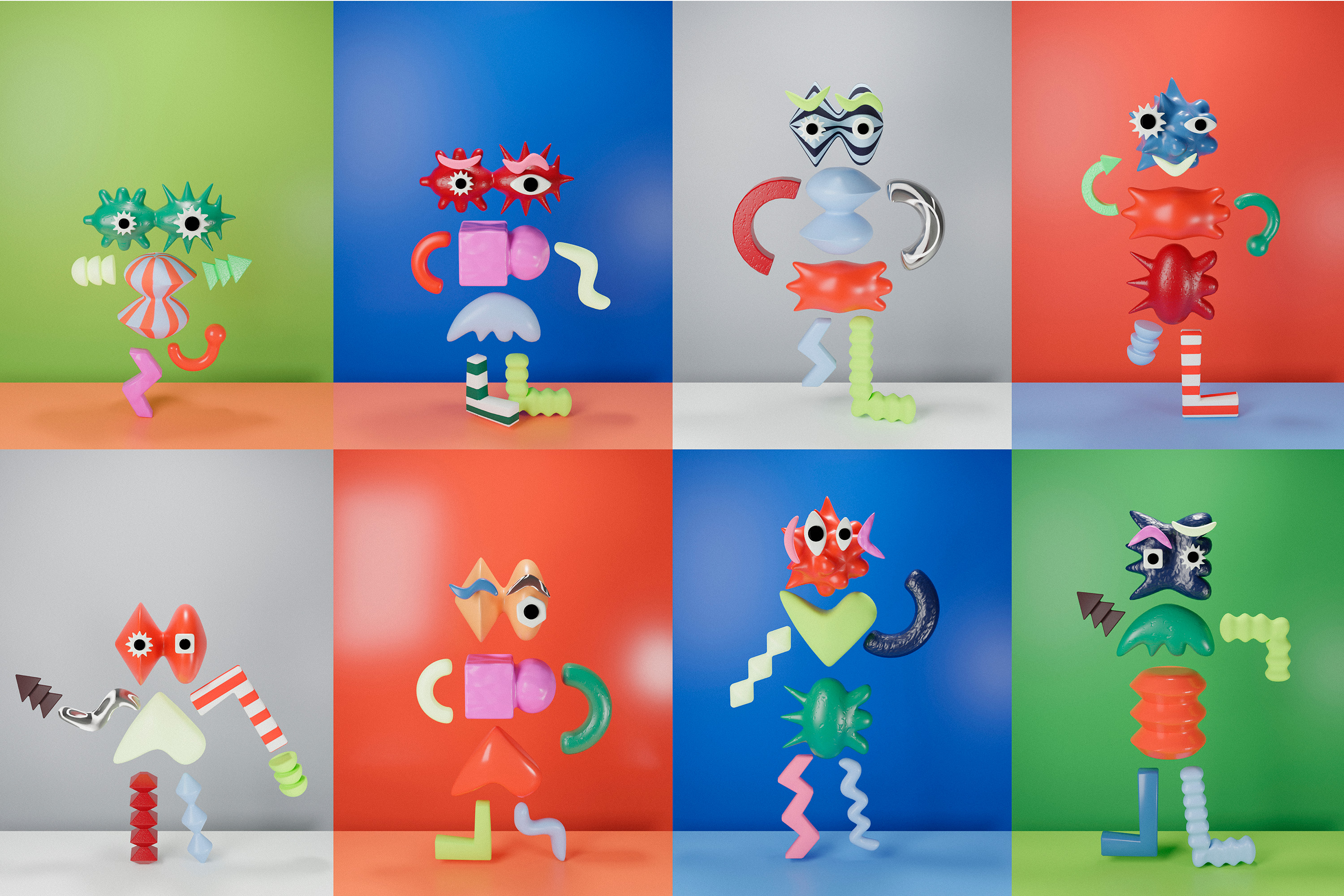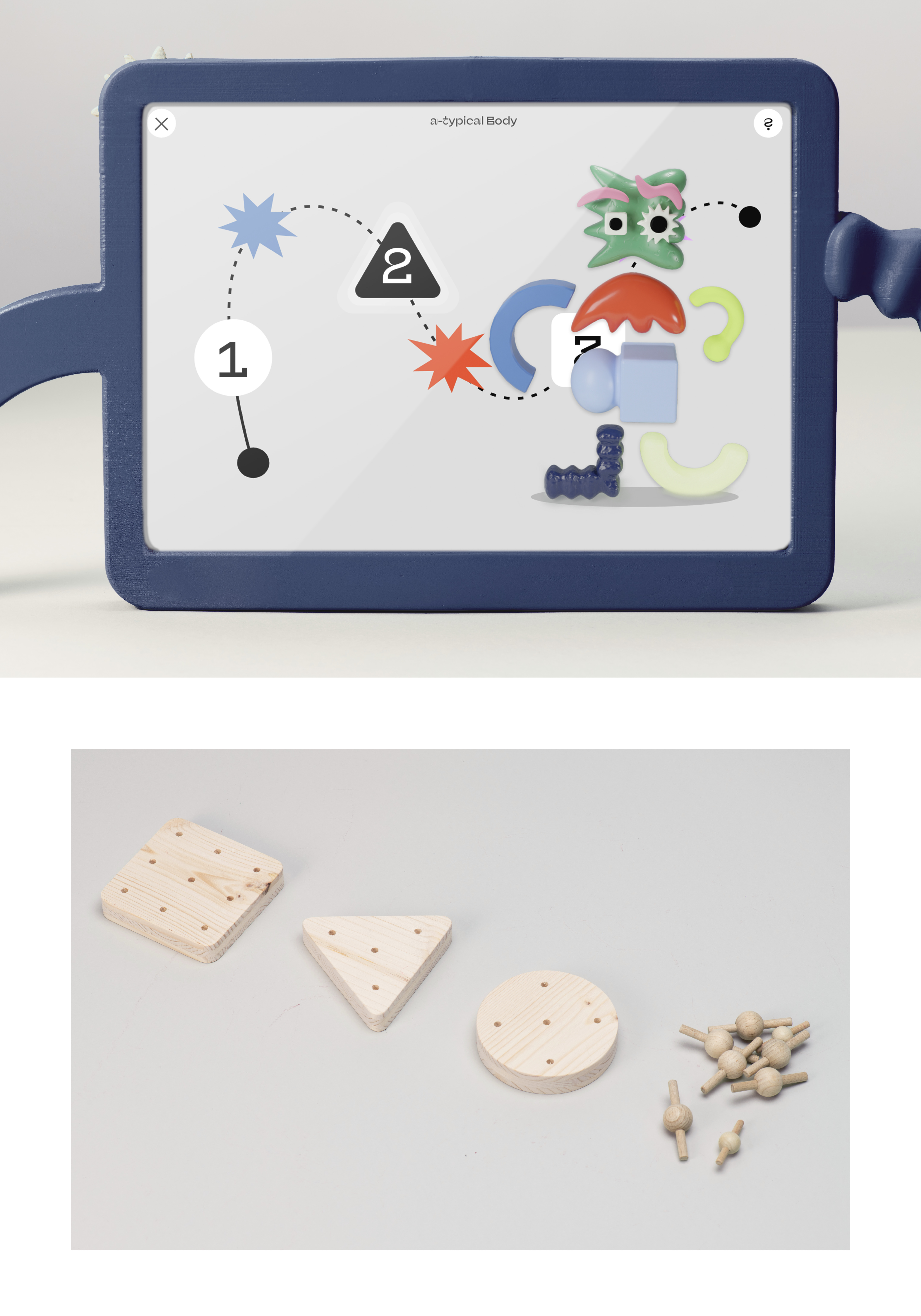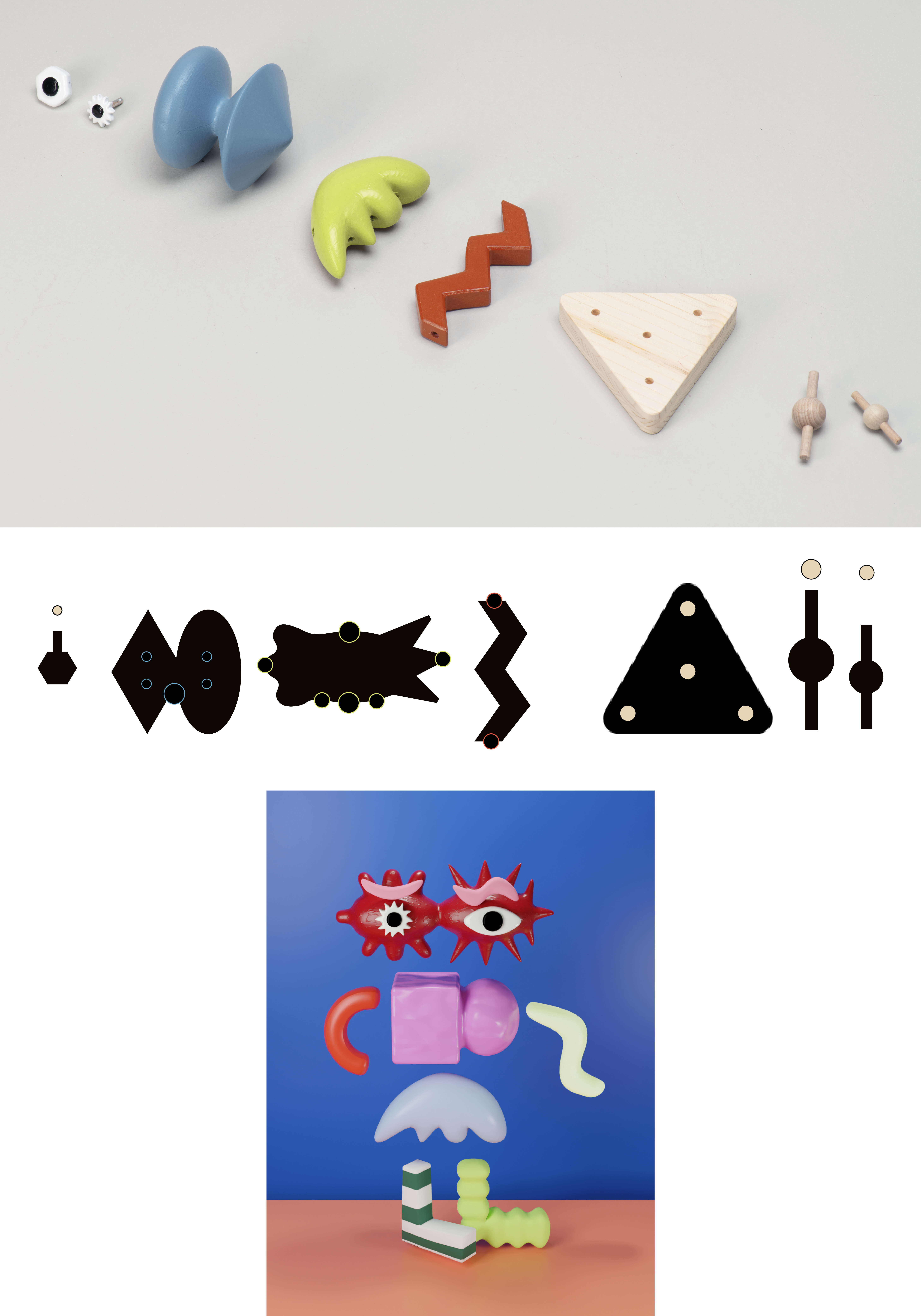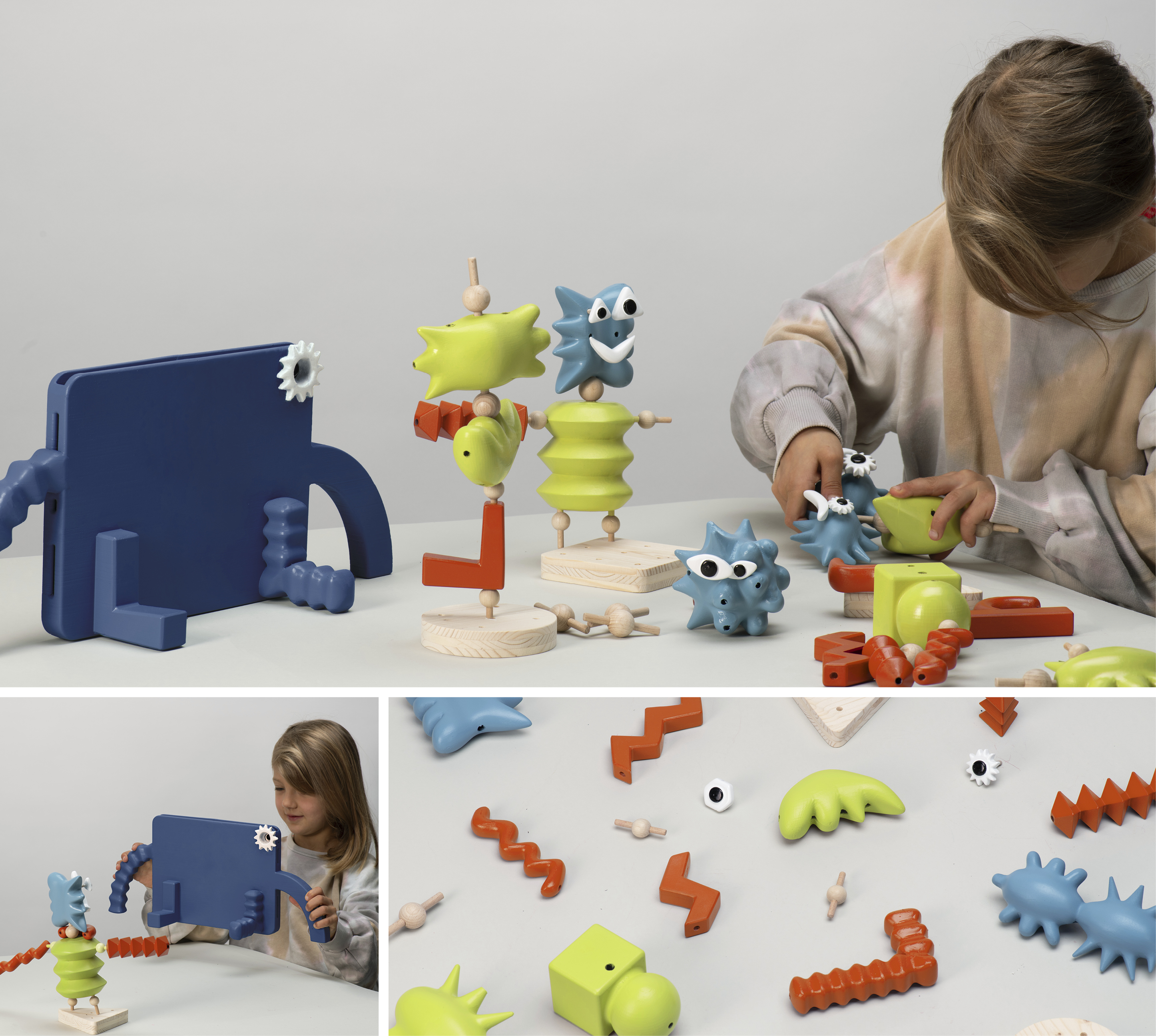
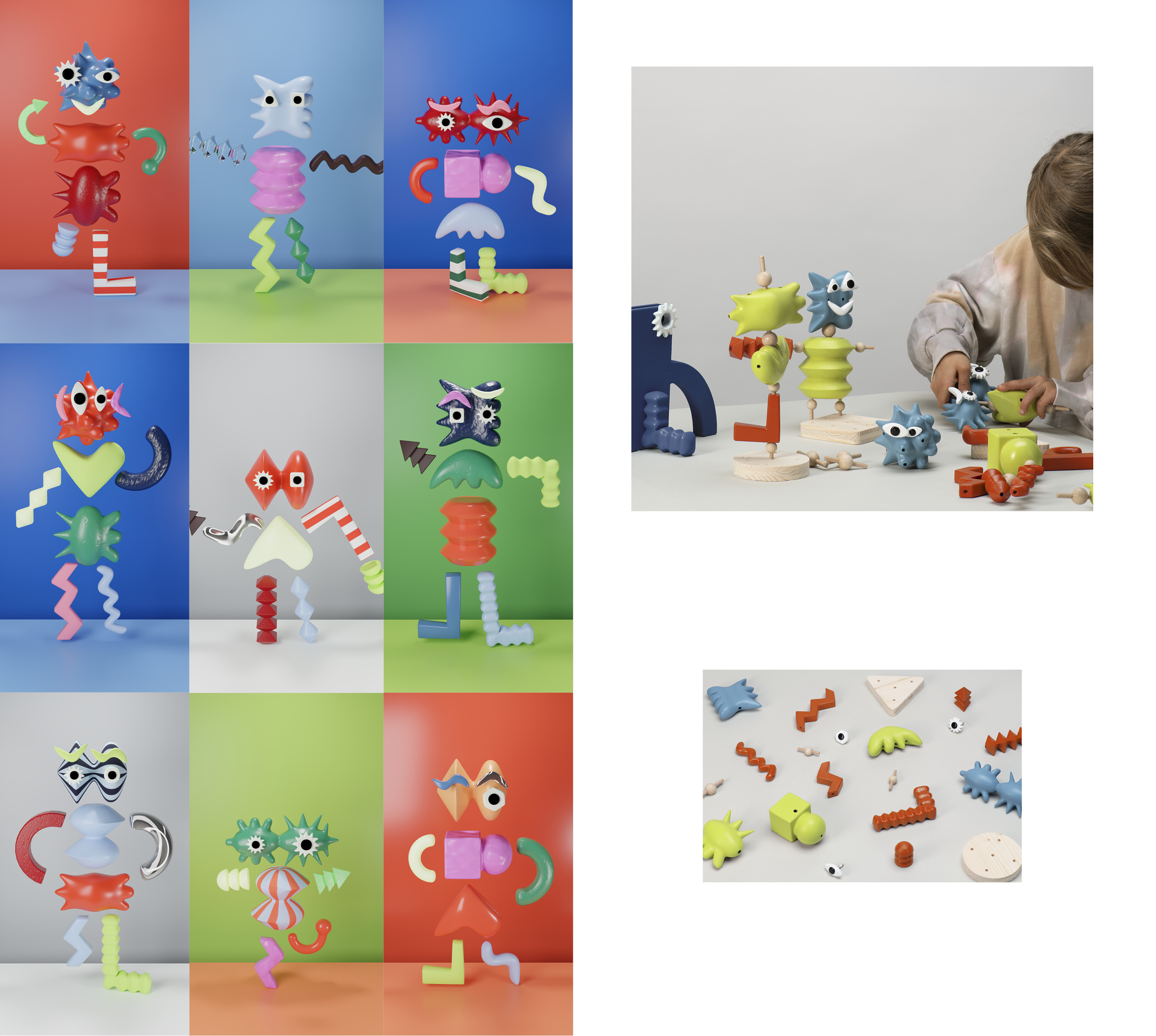

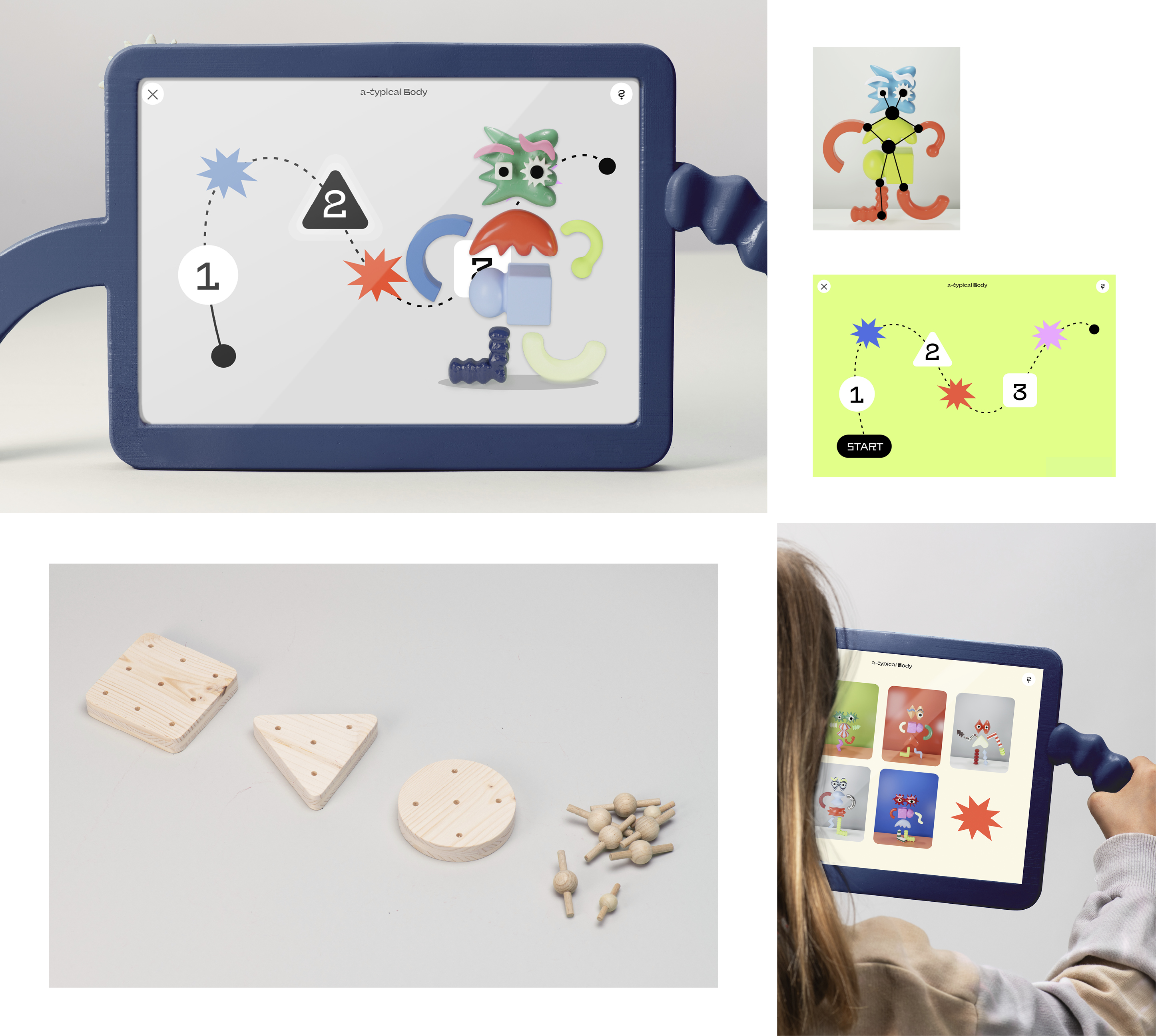
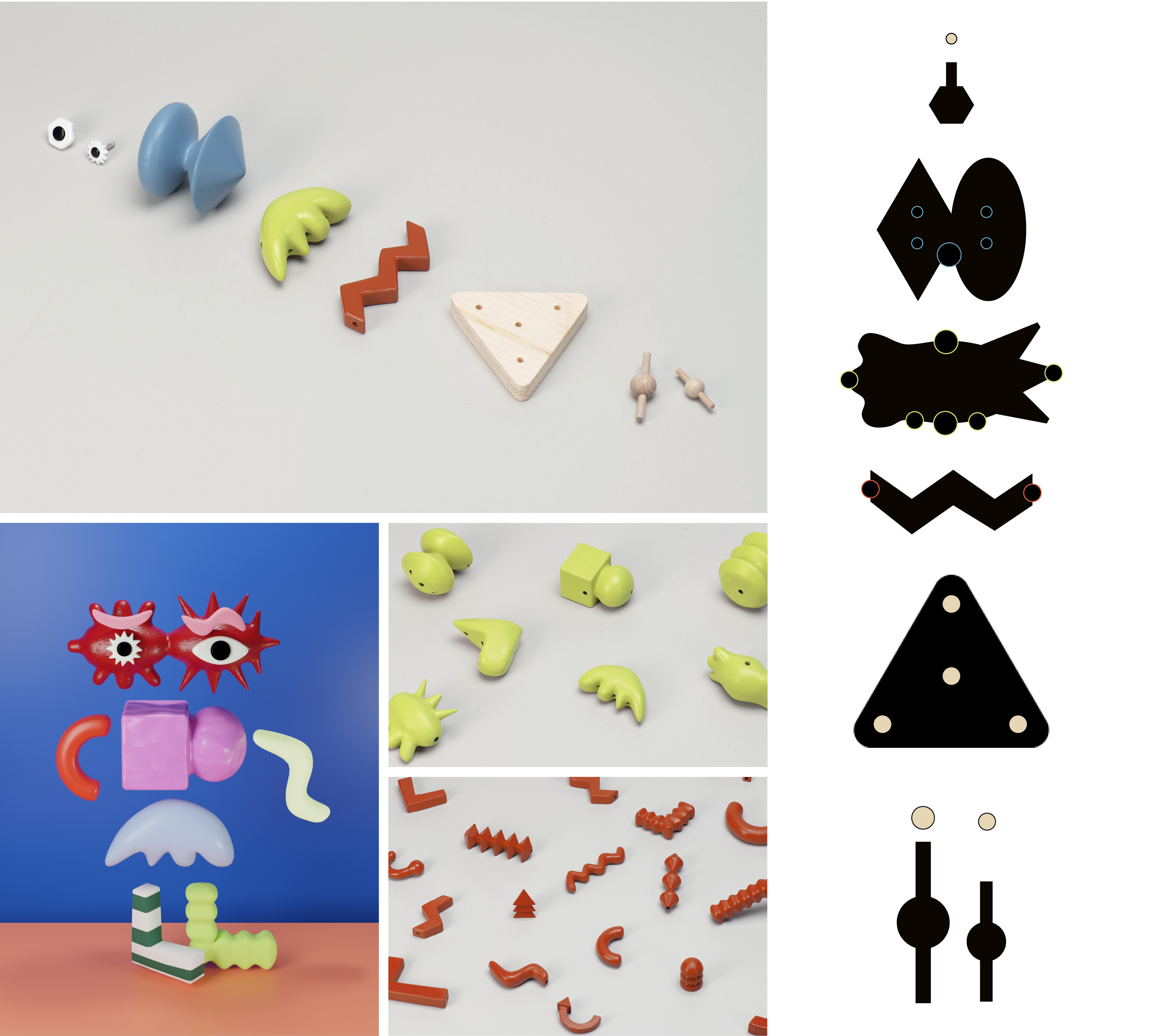
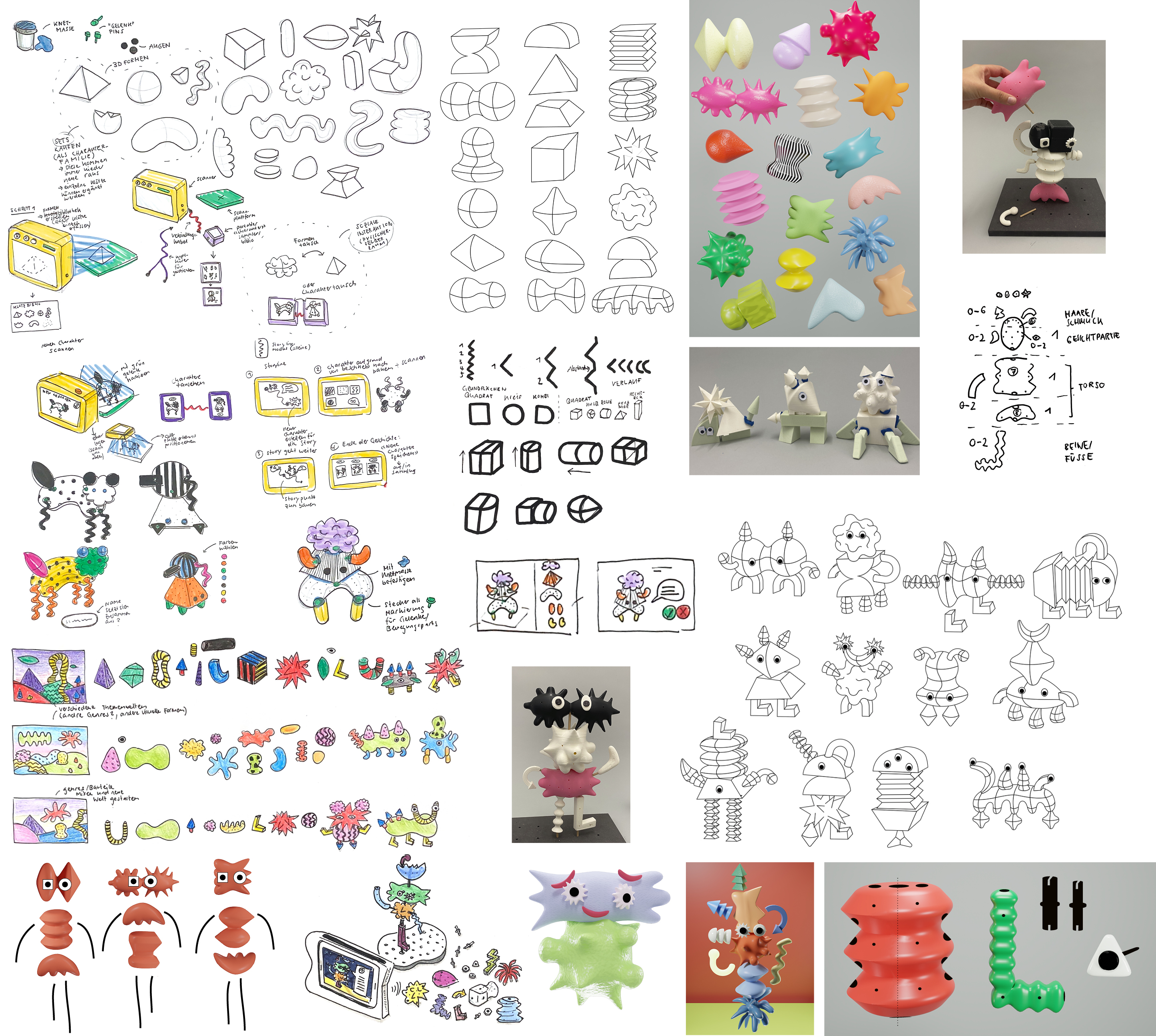
In my theoretical work, I analysed how stigmatisation develops and how the design of children‘s toys is related to this. I learned that stigmatisation is strongly dependent on social norms and particularly affects people who do not conform to these norms, such as people with physical disabilities. Play is a key factor in the development of these norms, as children test and learn behaviour patterns through play. To break these patterns, it is necessary to rethink the design process. In my response, I use design to playfully educate. therefore I decided to address the topic of inclusion as learning content.
In response, I created «a-typical Body», a building block set that allows children to create «imperfect» characters and bring them to life digitally via tablet. The characters are integrated into a digital story about being «atypical», teaching children that everyone is typical in their own way. «a-typical Body» blends analogue and digital play, encouraging a balance between hands-on play and digital exploration through evolving stories and characters.
«How can inclusivity be taught to
children through design?»
a-typical Body – interactive building BlocksBA thesis project
Basel Academy of Art and Design
Mentoring: Prof. Nicole Schneider,
Dr. Meret Ernst
Basel Academy of Art and Design
Mentoring: Prof. Nicole Schneider,
Dr. Meret Ernst
2024
a-typical Body
interactive building Blocks
interactive building Blocks
BA thesis project
Basel Academy of Art and Design
Mentoring: Prof. Nicole Schneider,
Dr. Meret Ernst
︎2024
Basel Academy of Art and Design
Mentoring: Prof. Nicole Schneider,
Dr. Meret Ernst
︎2024
Focus ︎︎︎research, form study, animation, Interface
«How can inclusivity
be taught to children
through design?»
In my theoretical work, I analysed how stigmatisation develops and how the design of children‘s toys is related to this. I learned that stigmatisation is strongly dependent on social norms and particularly affects people who do not conform to these norms, such as people with physical disabilities. Play is a key factor in the development of these norms, as children test and learn behaviour patterns through play. To break these patterns, it is necessary to rethink the design process. In my response, I use design to playfully educate. therefore I decided to address the topic of inclusion as learning content.
In response, I created «a-typical Body», a building block set that allows children to create «imperfect» characters and bring them to life digitally via tablet. The characters are integrated into a digital story about being «atypical», teaching children that everyone is typical in their own way. «a-typical Body» blends analogue and digital play, encouraging a balance between hands-on play and digital exploration through evolving stories and characters.
In response, I created «a-typical Body», a building block set that allows children to create «imperfect» characters and bring them to life digitally via tablet. The characters are integrated into a digital story about being «atypical», teaching children that everyone is typical in their own way. «a-typical Body» blends analogue and digital play, encouraging a balance between hands-on play and digital exploration through evolving stories and characters.
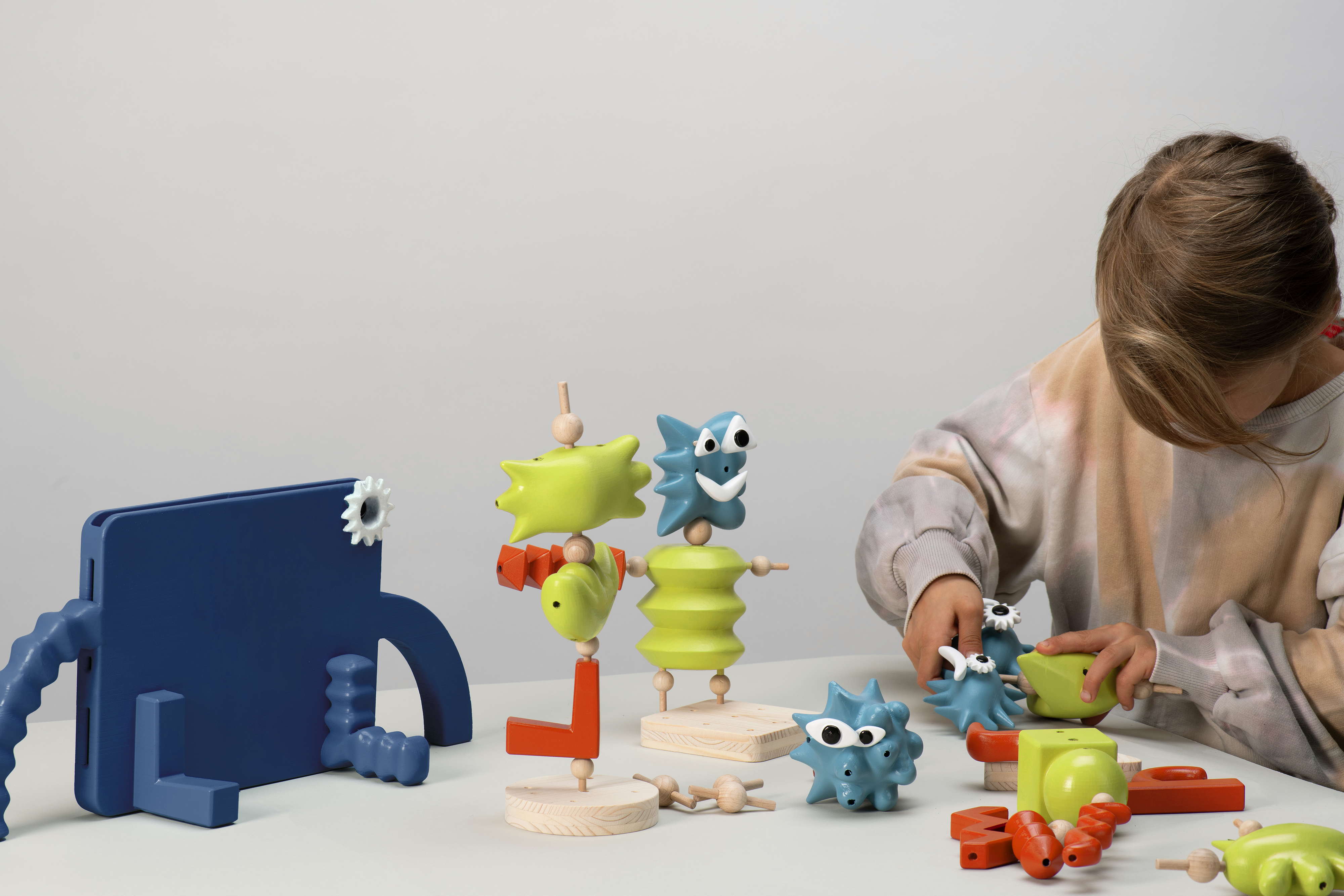
Based on the theoretical research, I have created a play scenario that is intended to introduce the children to the topic of «inclusivity». This involves that the kids can build «a-typical» characters based on digital stories about inclusion by breaking away from conventional norms.

I have been exploring the question of how imperfection can be reflected in abstract shapes by sketching, prototyping, also in the digital space.
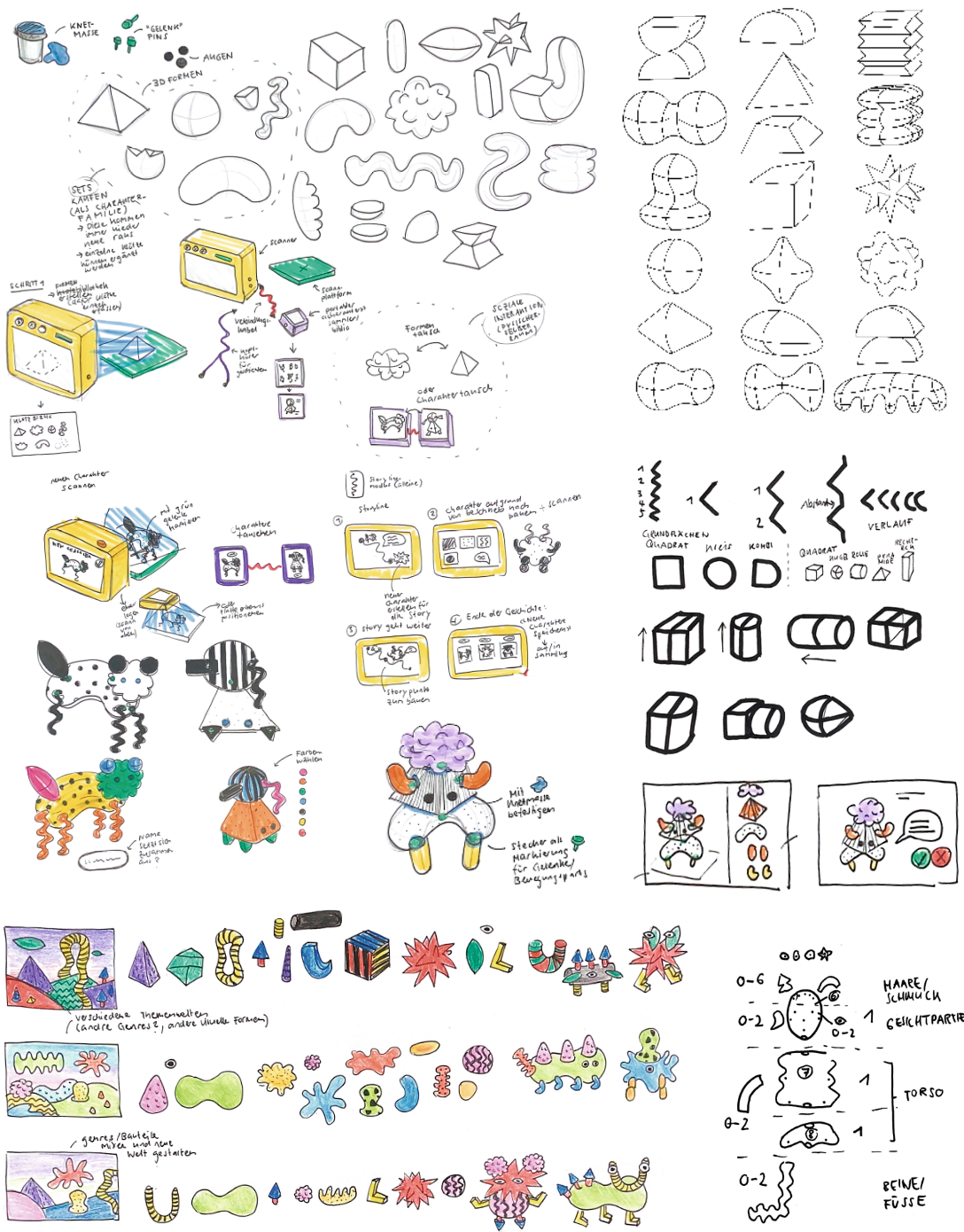
Bright and vibrant colors should make the play experience more engaging.
In the analog set, colors are divided by shape categories to help children assemble the characters. In the digital space, the colors reflect the analog ones for consistency but allow for more customization with additional colors, patterns, and textures by its creators.
